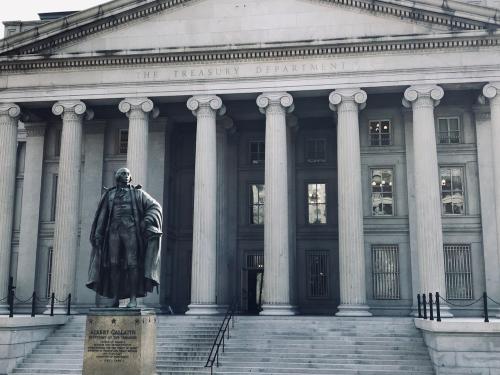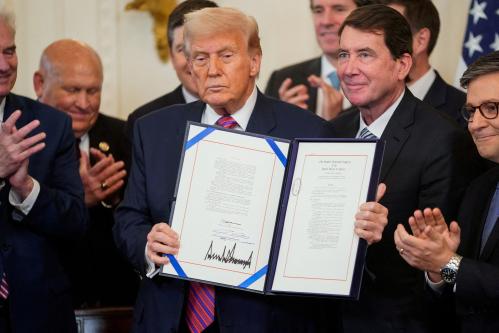Recent statements by Trump administration officials indicate that amending banks’ Enhanced Supplemental Leverage Ratio (ESLR) will be the first in what many expect will be series of direct and indirect reductions in capital requirements to be proposed by federal banking regulators. (The leverage ratio is the minimum amount of capital banks are required to hold as a percentage of their assets, including U.S. Treasuries and reserves held at the Federal Reserve, regardless of the riskiness of those assets. It accompanies risk-based capital standards, which require banks to hold more capital the riskier their assets.) Unlike other possible changes in capital standards, modification of the ESLR has been favored by many advocates of strong overall capital requirements, myself included. The reason is the potential negative impact of the current ESLR on the effective functioning of markets for U.S. Treasuries, as the amount of U.S. debt continues to balloon. In short, the current ESLR—which is imposed on the eight most systemically important U.S. banks (G-SIBs)—may limit banks’ ability to buy U.S. Treasuries at moments of market distress.
Supporters of strong overall capital requirements would couple a relaxation of the ESLR with an increase in risk-weighted capital requirements, so as to preserve the level of resiliency of the G-SIBs that has been achieved since the Global Financial Crisis. There is little chance banking regulators will take a robust form of that approach, though one hopes they will recognize the most glaring vulnerability of some bank Treasury holdings to market risk. Still, there is an important policy choice to be made on the basic route to be taken in relaxing the ESLR in this second- or third-best situation. The banking agencies should not simply exclude Treasuries (and central bank reserves) from the denominator of the ESLR. Instead, they should lower the minimum ESLR to allow significantly more Treasury activity by the largest U.S. banks, while preserving the purpose of the leverage ratio to hedge against unexpected changes in the value of traditionally safe assets.
The Brookings Institution is committed to quality, independence, and impact.
We are supported by a diverse array of funders. In line with our values and policies, each Brookings publication represents the sole views of its author(s).







Commentary
Op-edThe best way to modify the Enhanced Supplementary Leverage Ratio (ESLR)
June 18, 2025